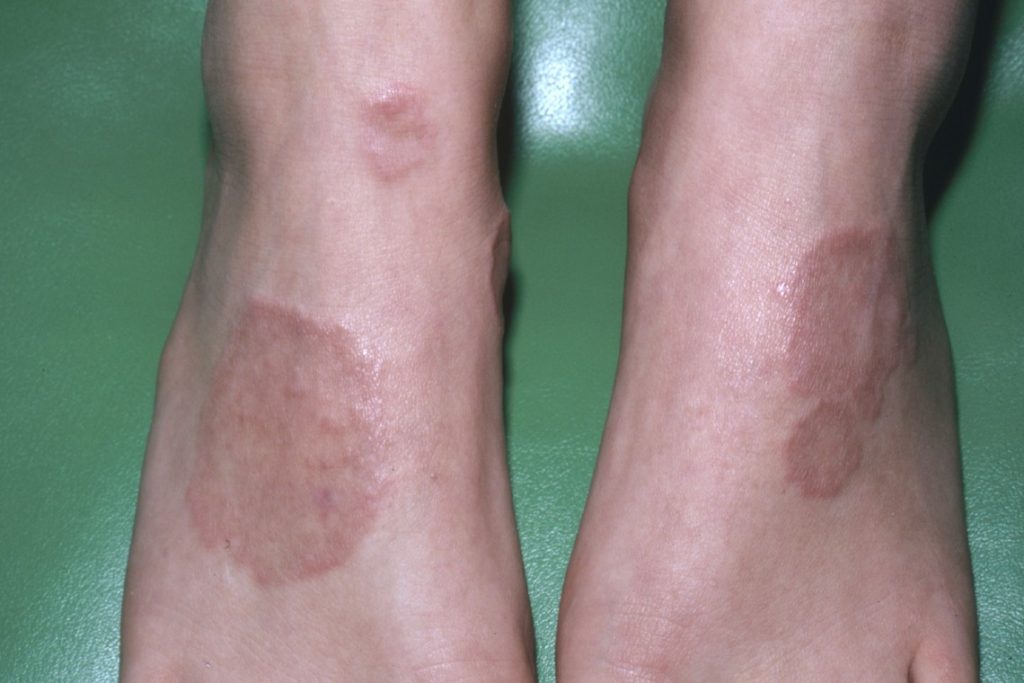Published on
Differential Diagnosis
- Tinea corporis
- Granuloma annulare
- Necrobiosis lipoidica
- Lichen planus

Diagnosis
This patient was diagnosed with granuloma annulare (GA), a benign granulomatous inflammatory disorder of the dermis or subcutis. Its cause is unknown, but there are reports in the literature suggesting that GA is associated with certain triggers or systemic diseases, most commonly diabetes mellitus. Other diseases that may be associated include thyroid disease, dyslipidemia, malignancy, and infections. GA occurs in women twice as often as it does in men; two-thirds of patients with GA are under 30 years of age.
Learnings/What to Look for
- Small dermal papules may present in isolation or coalesce to form smooth annular plaques, often on extremities
- Lesions are typically asymptomatic or only mildly pruritic, but the appearance may cause distress for the patient
- There are three principal variants of GA: localized (75% of cases), disseminated (or generalized), and subcutaneous (also known as pseudo-rheumatoid nodules). Patch GA is a variant of localized GA in which the plaques are extremely thin and barely palpable. A fourth type—perforating GA—refers to rare lesions that demonstrate histologic evidence of transepidermal extrusion of degraded collagen
Pearls for Urgent Care Management and Considerations for Transfer
- GA usually resolves spontaneously with no adverse sequelae
- Some cases may be persistent or recurrent
Acknowledgment: Images and case presented by VisualDx (www.VisualDx.com/JUCM).
